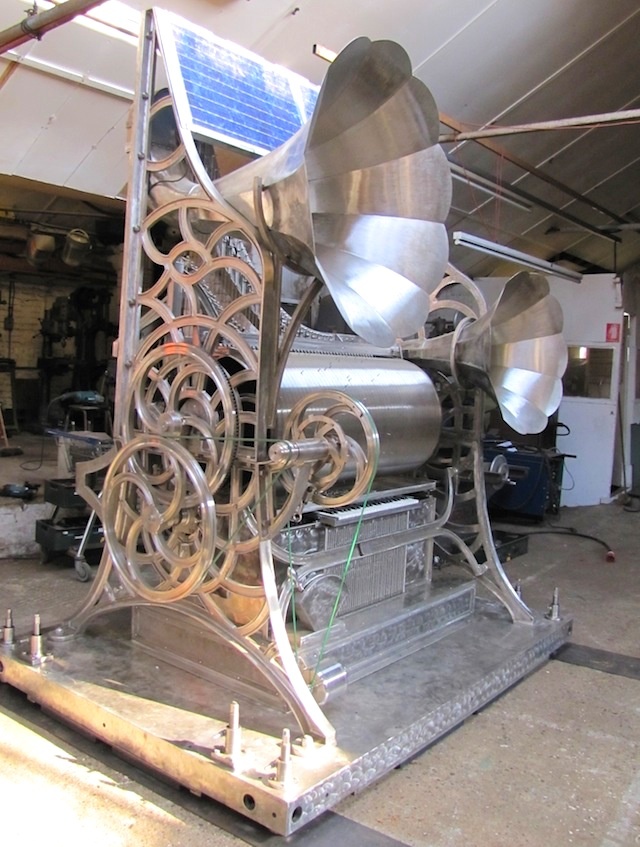- in Production by Bobby Owsinski
The Sharpsichord – It’s Bizarre But It Works

I love extreme or little-known instruments, as you’ve seen from many past posts, and one that fits into both categories is the Sharpsichord. It’s an automatic acoustic harp created by instrument creator Henry Dagg on a grant from the English Folk Dance and Song Society. It was originally designed as an interactive sound-sculpture for the gardens of Cecil Sharp House. It eventually went beyond that vision as it ultimately ended up in Bjork’s Biophilia showcase (see the video below).
The Sharpsichord is totally made of stainless steel and designed to allow a musician to compose his or her own music by screwing a ‘pin’ into the surface of a perforated cylinder at the position required for each note to be played. Each of the 11,520 holes is threaded to accept a 3mm threaded pin kept in a tray under the cylinder.
As the cylinder rotates, each pin lifts a lever that plucks the appropriate string, which transfers its energy to a rocking bridge coupled to a long diaphragm. Those vibrations are amplified acoustically by a large horn at the bass end, and a smaller horn at the treble end. The solar panels provide power to the battery, which runs the motor.
It has a few advantages over other stringed instruments. For one thing, it stays permanently in tune, and it can also easily play the programmed music either backwards or forwards. One of the instrument’s flaws is the limited capacity of the cylinder, which only holds around 40-90 seconds before repeating the program, but that’s what happens with mechanical computers. Also, although the Sharpsichord was designed as a public instrument that required no performance skills at all, it can be hard work hammering the pins in sometimes.
You can read more about it here as well as an interview with Henry Dagg, or check out the video below.

